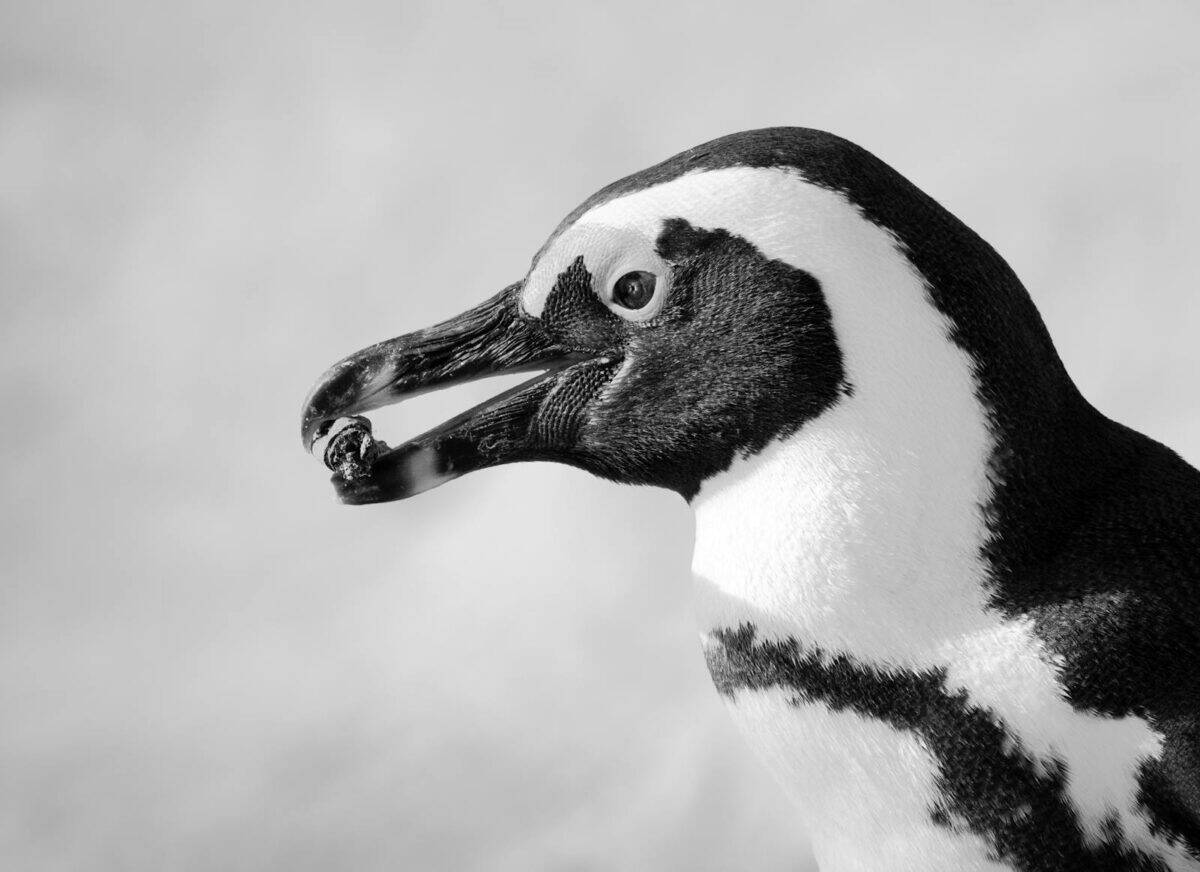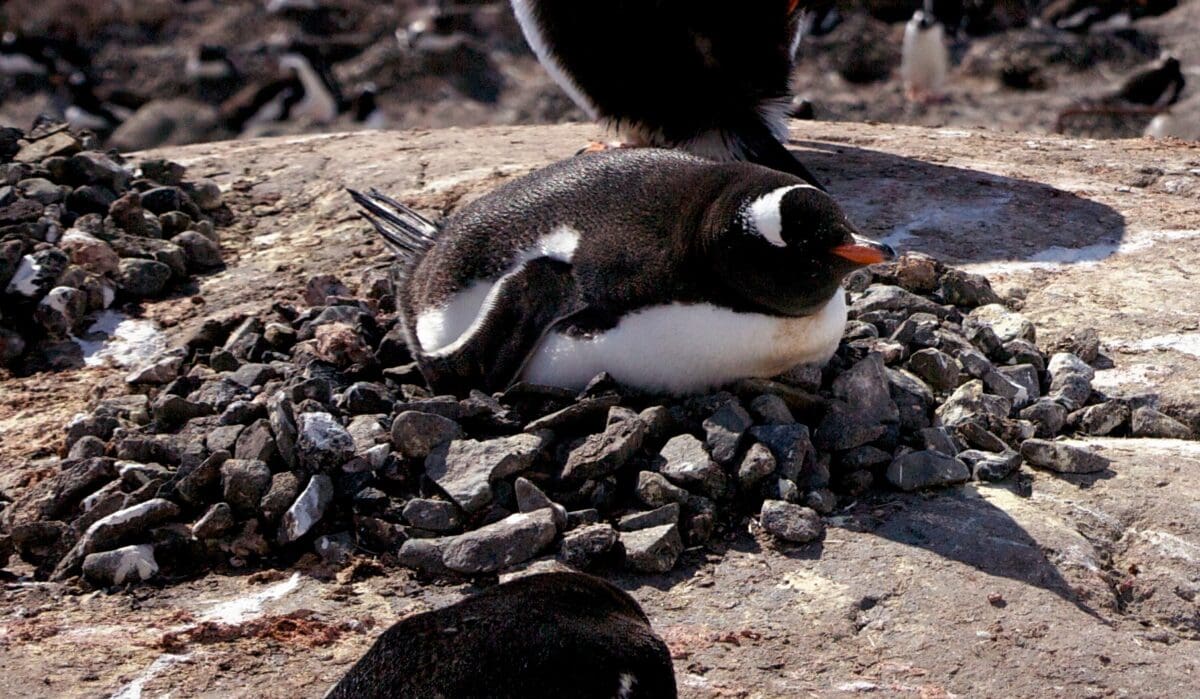In the frigid Antarctic landscape, where temperatures plummet and harsh winds howl across ice shelves, one might not expect to find romance. Yet amidst this unforgiving environment, penguins engage in one of nature’s most endearing courtship rituals – proposing with carefully selected pebbles. This charming behavior has captivated scientists and nature enthusiasts alike, offering a glimpse into the complex social lives of these remarkable flightless birds. Beyond their tuxedo-like appearance and waddling gait, penguins demonstrate sophisticated mating behaviors that reveal surprising parallels to human courtship traditions.
The Pebble Proposal: Nature’s Engagement Ring

For several penguin species, particularly Adélie, Gentoo, and Chinstrap penguins, pebbles serve as the equivalent of a diamond engagement ring. When a male penguin finds a suitable mate, he searches the shoreline for the perfect pebble – smooth, round, and aesthetically pleasing – to present to his chosen female. This gesture isn’t merely symbolic; it represents the first contribution to their nest, which will eventually be constructed entirely of these small stones. The careful selection process can take hours as the male examines and discards numerous options before finding one worthy of his potential partner. The presentation itself often involves a ritualized bow, with the male placing the pebble directly at the female’s feet in a gesture that seems remarkably deliberate and ceremonious.
The Science Behind Pebble Selection

Research has revealed that penguin pebble selection is far from random. Males demonstrate clear preferences for certain characteristics, including smoothness, roundness, and size consistency. Studies at research stations in Antarctica have documented male Adélie penguins traveling significant distances – sometimes over a kilometer – to locate ideal stones. This selectivity serves a practical purpose, as well-shaped pebbles interlock more effectively to create stable nests that resist Antarctic winds. Scientists have observed that females appear to evaluate both the quality of the offered pebble and the effort demonstrated in its procurement, using these factors to assess the male’s potential as a provider and partner. Interestingly, researchers have documented cases where females reject pebbles deemed unsuitable, prompting males to continue their search until finding an acceptable offering.
Nest Building: Beyond the Proposal

The pebble proposal marks just the beginning of the penguin courtship process. Once a pair has bonded, they work together to construct a nest entirely from these small stones. The nest serves crucial functions: it elevates eggs above the wet, cold ground, provides drainage during snowmelt, and offers protection against predators. Depending on the species, these nests may contain hundreds of carefully arranged pebbles. The construction process continues throughout the breeding season, with both partners continuously adding and rearranging stones to maintain the nest’s integrity. This cooperative building effort strengthens the pair bond and allows the penguins to assess each other’s commitment and work ethic – essential qualities for successfully raising offspring in the harsh Antarctic environment.
Pebble Theft: The Dark Side of Penguin Romance

The value placed on quality pebbles has led to what scientists call “pebble theft” among penguin colonies. With prime nesting stones sometimes scarce, opportunistic penguins may steal from neighboring nests when their owners are distracted or foraging. This behavior creates a fascinating penguin “economy” centered around these prized objects. Studies have documented elaborate theft strategies, including diversionary tactics where one partner creates a distraction while the other quickly snatches a coveted stone. The theft typically targets nests whose owners are away or inattentive, though occasionally bold penguins will attempt to steal directly from occupied nests, risking confrontation. This competitive dynamic adds another layer of complexity to penguin social structures and demonstrates how valuable these simple stones become in the context of breeding success.
A Tale of Two Penguins: Famous Courtship Stories

Among the most well-documented penguin courtship stories is that of “Romeo” and “Juliet,” an Adélie pair observed at Antarctica’s Ross Island research station. Scientists recorded Romeo presenting seven different pebbles before finding one that Juliet accepted – a particularly smooth, blue-tinted stone that stood out among the typical gray rocks of the area. After her acceptance, the pair constructed one of the largest nests in the colony, successfully raising three chicks over two seasons. Another famous case involves a Gentoo penguin at Edinburgh Zoo nicknamed “Pebble Thief,” who developed a reputation for collecting shiny stones left by visitors near the enclosure. This penguin presented an unusual blue marble to a potential mate, who accepted it immediately, demonstrating how adaptive these birds can be even in captive environments.
Monogamy and Mate Fidelity: The Power of Pebbles

Many penguin species that engage in pebble gifting exhibit strong monogamous tendencies, often reuniting with the same partner across multiple breeding seasons. Research suggests that the pebble-gifting ritual may contribute to this mate fidelity. A study tracking Adélie penguins over eight breeding seasons found that pairs who exchanged higher-quality pebbles were 23% more likely to reunite in subsequent years compared to those with lower-quality nests. This correlation indicates that the ritual might help penguins identify and remember particularly compatible partners. The shared investment in nest-building appears to strengthen pair bonds, creating relationships that can span years or even decades in long-lived penguin species. While not every penguin finds a lifelong mate – approximately 15% change partners each season – the pebble proposal creates a foundation for potentially enduring relationships.
Species Variations in Pebble Courtship

While pebble gifting is most famous among Adélie, Gentoo, and Chinstrap penguins, variations of this behavior occur across different penguin species. Adélie penguins typically engage in the most elaborate pebble exchanges, with males presenting multiple stones before nest construction begins. Gentoo penguins focus on larger, flatter stones that create more substantial nests, while Chinstrap penguins often combine pebbles with other materials like feathers. Emperor penguins, in contrast, don’t build stone nests at all, instead balancing eggs on their feet throughout incubation. Rockhopper penguins gather a combination of pebbles and vegetation, with males presenting both types of materials during courtship. These variations reflect each species’ adaptation to their particular breeding habitats and environmental challenges, highlighting the evolutionary flexibility of penguin courtship behaviors.
The Evolutionary Advantage of Pebble Gifting

Evolutionary biologists propose several theories explaining why pebble gifting became an established behavior. The most compelling suggests it serves as an honest signal of male quality – searching for and retrieving the perfect pebble demonstrates intelligence, persistence, and physical capability. A 2018 study found that males who presented higher-quality pebbles typically had better physical condition and higher breeding success over multiple seasons. Additionally, the behavior allows females to assess a potential mate’s commitment before investing in reproduction. From a practical standpoint, starting nest construction early ensures adequate time to build a proper structure before egg-laying begins. The behavior may also reduce aggression between potential mates, providing a non-threatening way to establish initial contact. Collectively, these advantages explain why pebble gifting has persisted as a successful reproductive strategy across multiple penguin species.
Documenting the Ritual: Researchers and Filmmakers

The pebble proposal ritual has fascinated scientists and documentary filmmakers for decades. Early documentation comes from Antarctic explorer Apsley Cherry-Garrard, who described the behavior in his 1922 account “The Worst Journey in the World.” Modern research employs time-lapse photography, satellite tracking, and even small cameras attached to select birds to document the entire process without human interference. Award-winning wildlife documentaries like BBC’s “Frozen Planet” and Disneynature’s “Penguins” have captured stunning footage of these interactions, bringing penguin courtship into living rooms worldwide. Scientists at research stations maintain “pebble catalogs,” documenting the physical characteristics of stones selected across multiple breeding seasons. This growing body of research and visual documentation continues to enhance our understanding of these complex social behaviors and their evolutionary significance.
Climate Change Threats to Penguin Courtship

Climate change poses serious threats to penguin breeding habits, including their iconic pebble courtship. Rising temperatures and changing precipitation patterns are altering the timing of breeding seasons, sometimes causing misalignment with peak food availability. Melting ice and increased rainfall can wash away carefully constructed pebble nests, forcing penguins to rebuild or abandon nesting sites altogether. Coastal erosion reduces the availability of suitable nesting areas and may limit access to quality pebbles. A 2021 study published in Global Change Biology found that Adélie penguin colonies experiencing the most rapid environmental changes showed increased competition for pebbles and higher rates of nest abandonment. Conservation efforts now include monitoring these behavioral changes as indicators of ecosystem health and establishing protected breeding areas where penguin courtship can continue unhindered by human activity and with some mitigation of climate impacts.
Human Parallels: Why We Find Penguin Proposals Endearing

The penguin pebble proposal resonates deeply with humans, perhaps because it mirrors aspects of our own courtship traditions. The offering of a special object as a token of affection parallels human engagement rings and gifts. The careful selection process demonstrates thoughtfulness and intention – qualities we value in human relationships. The construction of a home together following the acceptance of the proposal reflects similar life stages in human partnerships. Additionally, the monogamous tendencies of many penguin species echo idealized human relationship models in many cultures. Anthropomorphism aside, these similarities create an emotional connection between humans and penguins that has helped make them popular conservation symbols. Wildlife organizations regularly use the pebble proposal story in educational materials and fundraising campaigns, leveraging this emotional connection to build support for penguin conservation efforts across the globe.
The penguin pebble proposal stands as one of nature’s most remarkable courtship rituals, combining practical necessity with what appears remarkably like romantic sentiment. Through careful selection, presentation, and nest-building, penguins demonstrate sophisticated social behaviors that establish the foundation for successful reproduction in one of Earth’s harshest environments. While scientists caution against excessive anthropomorphism, the parallels to human courtship traditions create a powerful connection between our species and these charismatic birds. As climate change threatens penguin habitats worldwide, understanding and protecting these fascinating behaviors becomes increasingly important. The simple pebble – transformed from an ordinary stone into a symbol of partnership – reminds us that even in nature’s most extreme environments, the foundations of family life are built through small but meaningful gestures of commitment.
- 10 Unique Animal Species That Can Only Be Found in the United States - August 15, 2025
- 10 Amazing Animals You Can Only Find in the United States - August 15, 2025
- 10 Times Tornadoes Flattened Entire Towns in the Midwest - August 15, 2025

